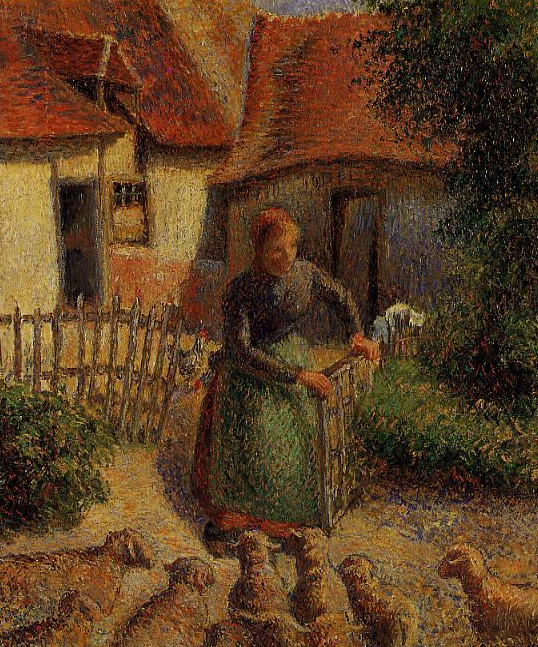Art and Culture
University of Oklahoma agrees to return Nazi stolen painting
OKLAHOMA CITY – The University of Oklahoma has agreed to return a painting that the Nazis stole from a French family during World War II, a lawyer and school officials said Tuesday in announcing a settlement of a drawn-out dispute over the artwork’s ownership.
Under the settlement, the title of impressionist Camille Pissarro’s 1886 “Shepherdess Bringing in Sheep” will be transferred to Leone Meyer, a French Holocaust survivor whose father owned the painting when it was stolen, her New York attorney, Pierre Ciric, told The Associated Press. Going forward, the painting will split its time being displayed at the university’s Fred Jones Jr. Museum of Art in Norman and a museum in France.
University President David Boren said in a statement that the school is pleased the painting will still be accessible in Oklahoma and available for educational purposes. He said the agreement also recognizes “the good faith and generosity” of the Weitzenhoffer family, who bought the painting in 1956 from a New York gallery and donated it in 2000 to the university.
Boren and the school had opposed the lawsuit on largely procedural grounds, saying prior to the settlement agreement that the school had sovereign immunity. They also argued that Meyer hadn’t been diligent in pursuing her claim and that she originally sued in New York rather than Oklahoma as a “forum shopping strategy” to avoid Oklahoma’s more restrictive statute of limitations.
Oklahoma House Rep. Paul Wesselhoft, a Republican from Moore, had been an outspoken critic of the university’s decision not to immediately return the painting.
“It’s immoral,” Wesselhoft said. “I love OU, and it’s embarrassing when my school doesn’t do the moral thing.”
Meyer maintained that she was entitled to the artwork because it belonged to her father when it was taken by the Nazis as German forces occupied France during World War II. Swiss records show that Meyer’s father had owned the painting, but a Swiss court ruled that its post-war owners had properly established ownership and rejected her claim.
In a few months, the settlement will require the painting to be transferred to a museum in France for a period of five years. After that point, it will rotate between museums in Oklahoma and France bearing a label that explains the painting’s history, including its seizure by the Nazis and restitution in court.
“She could have chosen to keep this painting in some type of private, closed-door type of situation,” Ciric said of his client. “Instead, she said she thought it was important for the public to still see this painting.”
The settlement also requires that after the title is transferred to Meyer, she will donate the painting to an art institution in France either during her lifetime or in her will.






















